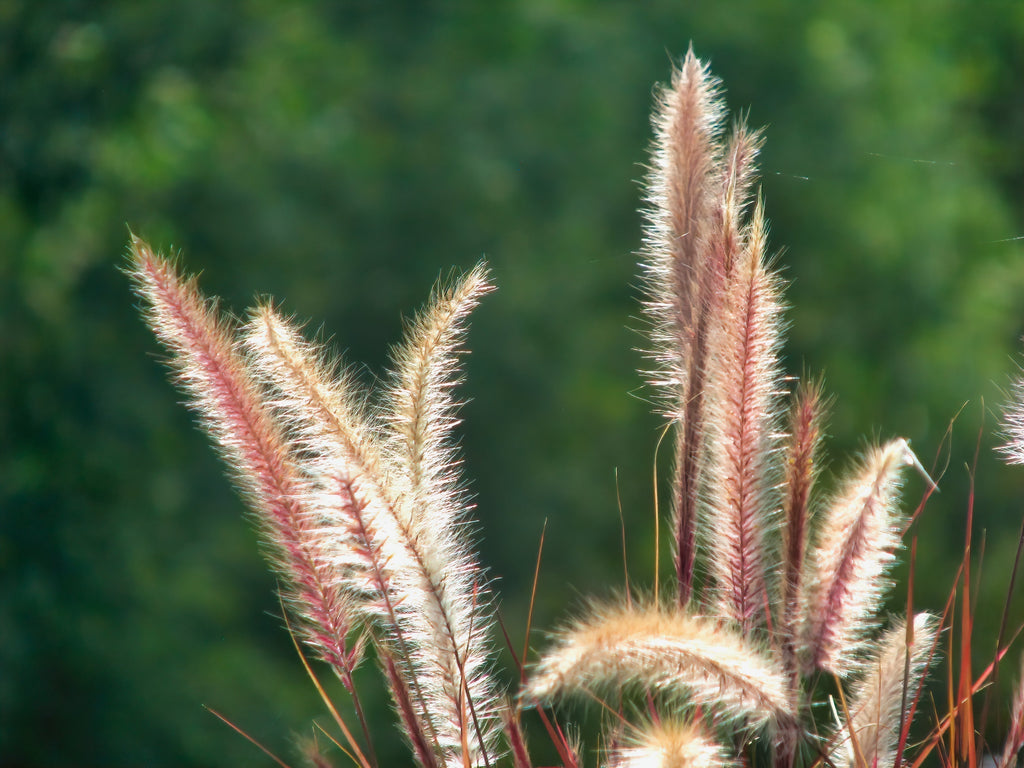The Dangers of Summer for Dogs

Ah, Australian summers! Barbecues, beaches, and balmy evenings — it’s a paradise for people, but for our dogs, it’s not all sunshine and rainbows. Summer can be a very dangerous time for our pets, from blistering heat to dangerous critters. Here's a breakdown of what you need to watch out for to keep your pup safe this summer.
Here are the biggest summer dangers for dogs:
-
Heatstroke and Overheating: Dogs cannot sweat like humans. In Australia’s extreme summer heat, they can develop life-threatening heatstroke when left in cars, exercised in midday sun, or without shade and water. Watch for heavy panting, drooling, confusion, or collapse.
-
Dehydration: Hot weather and constant panting cause rapid fluid loss. Without access to fresh water and rest, dehydration can worsen heat stress and lead to organ failure. Always carry water on walks.
-
Burns from Hot Surfaces: Pavement, sand, asphalt, and concrete can scorch paw pads within minutes. Test the ground with your hand before walking your dog. Choose early morning or evening outings.
-
Sunburn and Skin Damage: Light-coated and hairless breeds, as well as exposed areas (nose, ears, belly), are prone to sunburn, which can progress to skin cancer. Apply pet-safe sunscreen for outdoor activities.
-
Parasites and Insect-borne Diseases: Fleas, ticks, and mosquitoes are more active in summer. They spread diseases such as Lyme disease and heartworm. Regular checks and year-round preventives are essential.
-
Toxic Water and Algae: Stagnant ponds, lakes, and beaches may contain bacteria or blue-green algae. Drinking or swimming in contaminated water can cause vomiting, seizures, or liver damage. Always supervise swimming.
-
Toxic Plants and Grass Seeds: Many summer plants can poison dogs. Grass seeds easily lodge in paws, ears, or eyes, causing painful infections, especially in South Australia. Check your dog’s coat daily.
-
Marine Stingers and Bluebottles: Along Australian beaches, stings can cause intense pain, swelling, and distress. Keep dogs leashed in known stinger zones.
-
Cane Toads: Common in Queensland and northern regions, cane toads secrete toxins that can be fatal if licked or bitten. Keep dogs away from areas where toads are active.
-
Snakes: Active during summer in bushland across Victoria, South Australia, and NSW. Snake bites are medical emergencies and can kill a dog quickly. Avoid long grass and seek urgent vet care after any bite.
-
Overexertion and Lack of Rest: Vigorous play or exercise during peak heat can push dogs into exhaustion or collapse. Schedule activities for cooler times of day.
-
Bushfires: In fire-prone regions such as the ACT, SA, and Victoria, bushfires threaten the safety of pets and families. Have an evacuation plan that includes your dog.

Now, before you get in a panic mode, all these risks aren't Australia-wide and are variable depending on your dog's lifestyle and location! That being said, with global warming on the rise, we expect to see the dangers spread and increase, so be vigilant no matter where you live!
New South Wales: Hot Sand, Bluebottles, and Ticks
NSW boasts some of the best beaches in the country, but summer comes with hidden risks. Sand and sidewalks above 29°C can burn your dog’s paws within minutes. Always test the ground with your hand before letting them roam.
Do not walk your dog when the sun is shining the brightest. If it’s too hot for you, it’s too hot for them!
Bluebottles and Marine Stingers

The ocean also hides a nasty surprise: bluebottles. These jellyfish-like creatures frequently wash up along the NSW coast. A curious sniff or bite can result in a painful sting and swelling. If your dog shows signs of distress after a beach trip, consult a vet immediately.
Parasitic Ticks
Paralysis ticks are common along the East Coast of NSW. These parasites attach to the skin and release toxins that can cause weakness, paralysis, or even death. Perform daily tick checks, especially after beach or bush outings, and use vet-approved preventives year-round to avoid life-threatening conditions.
Victoria: Snakes and Grass Seeds
While Victoria's summer temperatures might be milder than the northern states, it’s prime snake season. Eastern brown snakes and tiger snakes are particularly active, especially in rural or bushy areas. A snake bite can be fatal, so keep your dog on a leash when walking in these environments and know the nearest 24/7 vet.
Grass seeds like foxtail grass seeds are another common hazard. They can lodge in your dog’s paws, ears, or fur, causing irritation or infection. Inspect your dog thoroughly after every walk.

Queensland: Heatstroke, Cane Toads, and Ticks
In sunny Queensland, the heat is relentless. Dogs can suffer from heatstroke even after short play sessions. Make sure they always have access to shade and water, and avoid exercise during peak heat hours.
Cane toads are another serious threat. These invasive amphibians are toxic, and licking or biting one can cause seizures or even death. If you suspect cane toad poisoning, rinse your dog’s mouth with a wet towel carefully (but avoid letting them swallow) and seek veterinary help immediately.
Ticks and snakes are also widespread in Queensland’s humid climate. Regular grooming and preventive measures are important to reduce the risks of ticks, and snakes are out in force during summer after a long winter - be sure to avoid long grasses, bushland or even sand dunes - as these are prime snake sanctuaries.
In Australia, the prevalence of heartworm disease is highest in subtropical/tropical areas with 90% of all reported cases being from Queensland! Ensure your dogs are covered for heartworm prevention as this worm spreads through the bite of a mosquito, travels to the heart and can be fatal!

Western Australia: Coastal Critters, Dry Heat, and Sunburn
WA’s coastline is stunning, but box jellyfish and other marine stingers can pose a hazard. Be cautious when letting your dog swim in unfamiliar waters.
Snakes have become an increasing threat to dogs in Western Australia with a terrifying surge of snake bites since 2024 from a type of brown snake, Dugite, native to Western Australia.
Inland, the dry heat can be punishing. Ensure your dog’s paws don’t burn on hot pavements, and keep them hydrated. Dehydration is a silent killer, so always bring water and a portable bowl during outings.
For lighter-coated or hairless breeds, sunburn is a genuine concern. Apply pet-safe sunscreen to their nose, ears, and belly if they’re spending time outdoors.

South Australia: Grass Seeds, Snakes, and Bushfires
Grass seeds are a notorious problem in SA, particularly during summer. They can lodge in your dog’s paws, ears, or fur, causing irritation, infection, or worse. Inspect your pup after every walk.
Snakes, including brown and tiger snakes, are active in bushy areas. Keeping your dog on a leash in these environments can prevent dangerous encounters.
Bushfires are a common summer hazard. Have an evacuation plan that includes your dog, and keep a go-bag with essentials like food, water, and medications.

Tasmania: Rising Temperatures and Water Safety
Tasmania may be cooler than the mainland, but don’t be fooled, heatwaves do occur, and dogs can still overheat, especially as they are not used to warmer weather.
Freshwater bodies like lakes and rivers are popular for dog-friendly activities, but keep an eye out for hazards like fast currents or algae blooms, which can be toxic if ingested.

Northern Territory: Crocs, Extreme Heat, and Ticks
The Top End is no joke for dogs. Crocodiles are a real danger near rivers and waterholes. Always obey warning signs and never let your dog swim in or drink from these areas.
The extreme heat and humidity can also lead to rapid dehydration. Invest in a cooling vest or mat, and keep your dog indoors during the hottest parts of the day.
Ticks, including brown ticks, are a significant risk in tropical areas. Ensure regular checks and use effective tick treatment for dogs.

Australian Capital Territory: Bushfires and Burrs
ACT summers are notorious for bushfires, which can pose a threat to pets as well as people. Have an evacuation plan that includes your dog, and keep a go-bag with essentials like food, water, and medications.
Burrs and prickles in grassy areas can irritate paws and fur, so check your dog after hikes or runs.

Tips for a Dog-Safe Summer
- Hydration: Dogs lose fluids quickly in hot weather. Always carry water and a portable bowl for your dog.
- Exercise Safely: Avoid walks during the heat of the day. Choose early morning or late evening when pavement and sand are cooler.
- Paw Care: Always test the surfaces first to protect your dog's paws from the hot pavement, asphalt, and sand.
- Vet and Emergency Contacts: Keep your vet’s number and the nearest emergency clinic handy. Quick action can save your dog’s life in cases of heatstroke, snakebite, or poisoning.
- Local Risks Awareness: Each region has unique summer hazards: bluebottles and ticks in NSW, cane toads in QLD, snakes and bushfires in SA and VIC. Learn about local risks specific to your area.
- Parasite and Health Prevention: Keep vaccinations, flea, tick, and worming treatments up to date. Parasites are active in warm weather and can transmit serious diseases.
Australian summers can be tough on dogs, but with a little extra care and vigilance, you can make sure your dog enjoys the season safely. After all, summer is better with a happy, healthy pup by your side!






